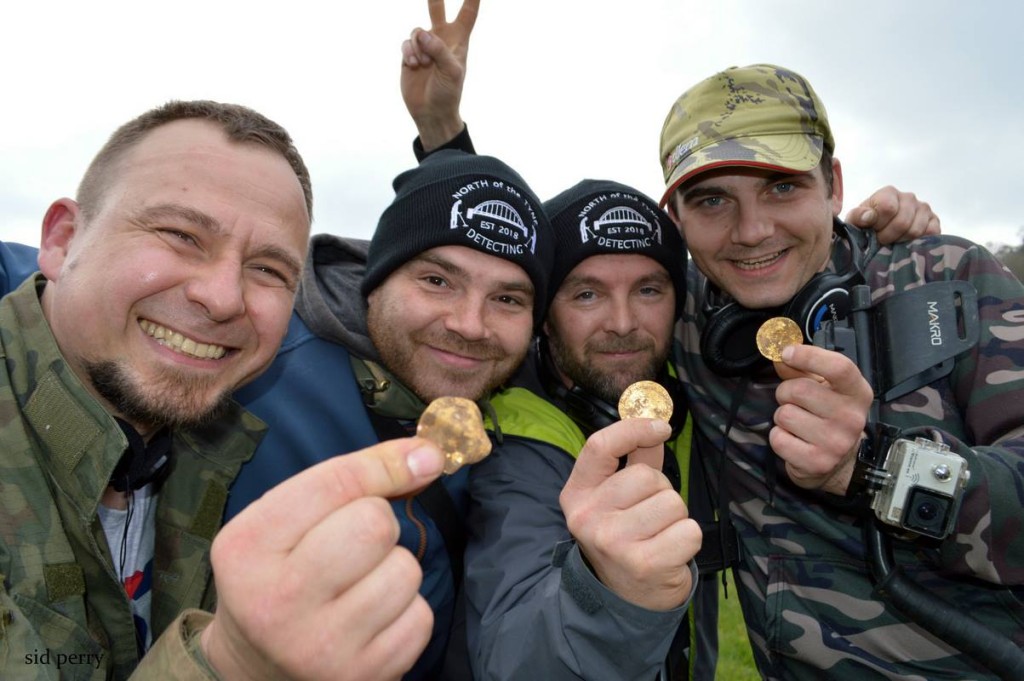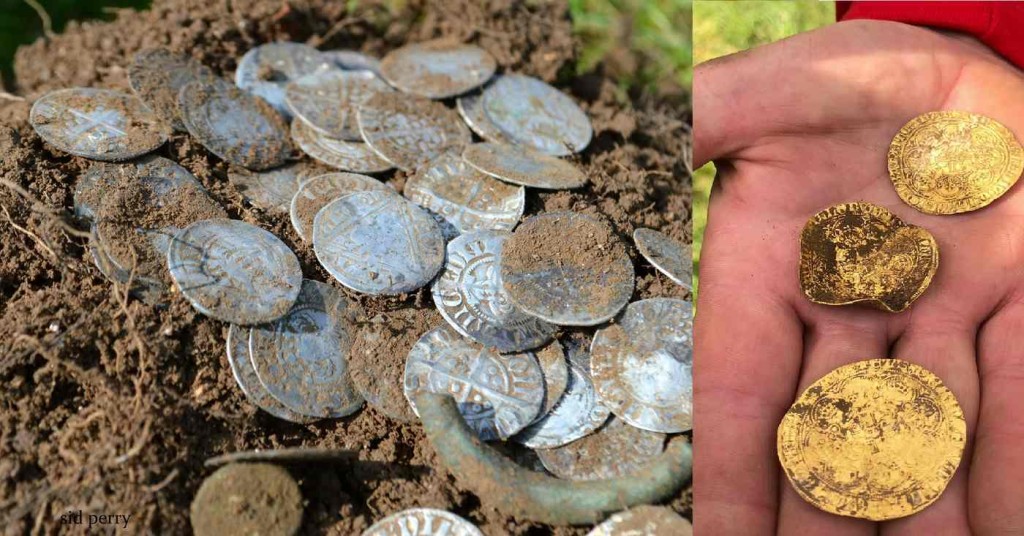
It’s always big news among Britain’s metal detecting hobbyists when a hoard is found, and a new one from Buckinghamshire is the biggest in a decade.
600 Medieval coins, including 12 rare gold “nobles” from the reign of Edward III, have been declared treasure by the British Government, and valued at around £150,000 ($180,000).
Seven men found the hoard which has been nicknamed the “Hambleden Hoard” on the Culden Faw Estate, Buckinghamshire, back in April 2019. It’s the biggest gold and silver hoard found in England in over a decade.
The metal detectorists Andrew Winter, Dom Rapley, Eryk Wierucki, Jaroslaw Giedyna, Dariusz Fijalkowski, and brothers Tobiasz and Mateusz Nowak were more used to digging up shotgun shells and thimbles than treasure, and were astonished to find coin after coin in the dirt.
It took four days to excavate all 627 coins, almost all of which were silver. They slept in tents three nights straight to ensure robbers couldn’t visit the site while they were away.
At an inquest last week at Beaconsfield Coroners Court, senior coroner Crispin Butler said the hoard met the criteria for treasure after reading a report by Dr. Barrie Cook, a curator at the British Museum.
Mr. Butler described the 12 gold coins as dating from 1346 to 1351 and extremely rare. There are, ironically, only 12 previously-known examples, all found during a 1963 survey.
The rest of the hoard—547 silver pennies from the reigns of Edward I and II, 21 Irish pennies, 20 continental coins, and 27 Scottish pennies from the reign of Alexander III, John Balliol, and Robert the Bruce respectively, are more common finds.

A miracle moment
“After finding the hoard, and then clearing the area, we had to extend the search twice more because we were finding so much,” said Mateusz Nowak. “It felt unreal. It was a miracle moment after moment for everyone.”
The spot price of the silver in the coins would be a little over £6 in today’s money, but the estimates of their worth as a historical find, plus the price of the gold, range as high as £150,000.
MORE FROM HISTORY: Codebreakers Crack Secrets of Lost Mary Queen of Scots Letters 430 Years After She Wrote them in Captivity
For American readers, it bears explaining that the find was made at an organized metal detecting rally, something really only possible in countries as old and as small as England. The setting was a field near Hambleden, a village that was big enough for registry in the famous Domesday survey of England commissioned by William the Conquerer in 1,086.
“When I found the coins I was shouting so much because I was so excited,” said Dariusz Fijalkowski, one of the contestants who sort of co-discovered the hoard with some other participants.
“Maybe I should have stayed quiet but I was so happy. For me those coins alone were special. They are small pieces of silver and also a piece of history.”
Andrew, Tobiasz, and Mateusz spent an hour digging in a field without finding anything and were on their way to another location when their detectors began signaling.
MORE FROM BRITAIN: English Teenager Discovers Hoard of 3,300-Year-Old Axes and Becomes Metal Detecting Celebrity
The trio turned over a clod of earth which contained two coins and could see more in the hole they had made. At around the same time, Dariusz found two coins of his own nearby. Putting their total finds in the category of “hoard,” which British treasure law stipulates must be more than 3.
The area was cleared and claimed jointly by the team who were then left to work alone.
They admit it got “absolutely hectic” when news of the find got around the festival. Detectorists from all over the world who were at the festival came to take a look, as the four drew out coin after coin.
MORE TREASURE NEWS: Largest Anglo-Saxon Gold Coin Hoard Discovered in English Field
On the first day they found 276 silver coins and 9 gold coins, and all admit they barely slept due to excitement.
Anni Byard, a liaison officer for the area was called to oversee the excavation and the location of each coin was painstakingly plotted on a grid.
At the time the men said it would later be independently evaluated before being sold, with the value split with the landowner.
SHARE This Awesome Find And Interesting Tradition With Social Media…




















